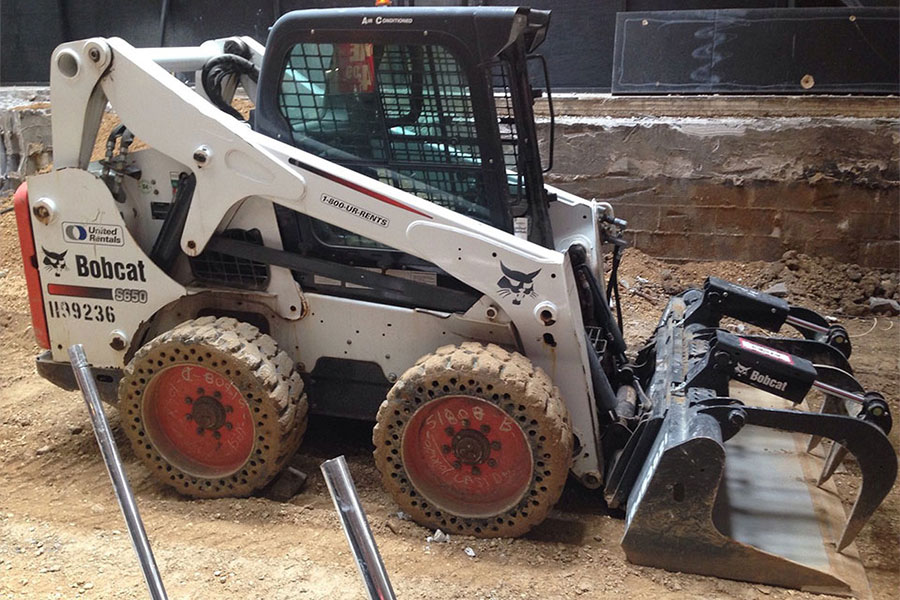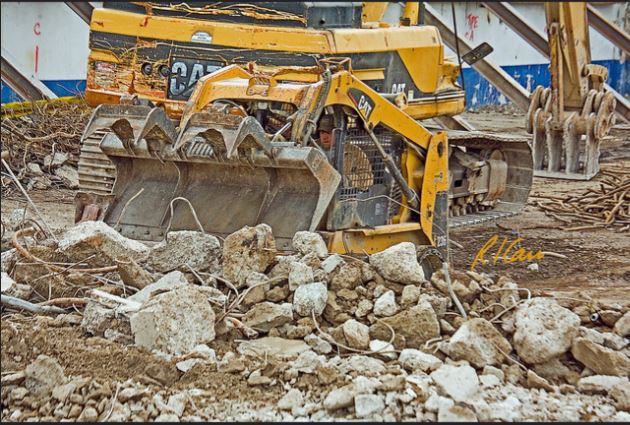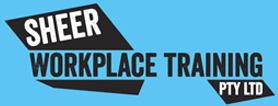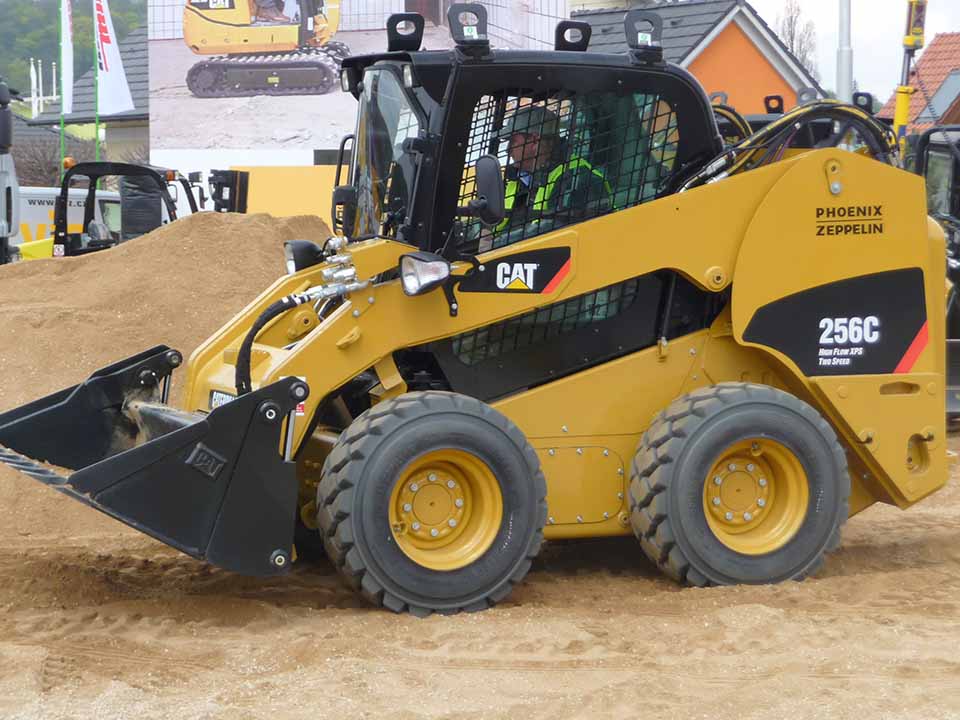Essential Skid Steer Loader Safety Guidelines
Skid steer loaders are essential in many industries, requiring a strong focus on safety. Discover how mastering this critical skill can not only enhance your job prospects but also keep you safe on the job, making it the ultimate guide for anyone looking to excel in construction, landscaping, or any field that uses these versatile machines.
- Understanding the Machine’s Controls: Familiarize yourself with all controls for safe operation.
- Wearing Appropriate Personal Protective Equipment (PPE): Wear helmets, safety glasses, and hearing protection on job sites.
- Checking the Surroundings: Inspect the environment for obstacles or hazards before operation.
- Ensuring Proper Communication: Use clear signals or radios to communicate with other personnel.
- Following Manufacturer’s Guidelines: Adhere to the manufacturer’s instructions for safe equipment use.
- Conducting Pre-Operation Inspections: Perform operation checks, including fluid levels and tire inspections.
- Avoiding Overloading:Do not exceed the loader’s operational capacity to prevent tipping.
At Sheer Workplace Training in Brisbane, with locations in Hemmant and Paget, we emphasize the criticality of understanding and adhering to safety guidelines. Safe operation of this heavy equipment is not just about personal safety but also about maintaining a secure job site.
Mastering Skid Steer Loader Operations: Key Techniques for Efficient and Safe Use
To proficiently operate a skid steer loader, one must combine technical knowledge with practical skills. This involves:
- Precision in Control – Develop precise control for effective maneuvering.
- Efficient Load Management – Understand proper load distribution for stability.
- Navigating Different Terrains – Learn to operate the loader safely on various terrains.
Understanding the machine’s capabilities, limitations and regular operation checks are crucial to ensure the loader is in optimal condition before commencing work.
Minimizing Skid Steer Loader Hazards: Implementing Effective Safety Practices
Minimizing risks associated with skid steer loaders requires a strategic approach to safety practices. This includes:
- Regular Safety Meetings – Conduct regular meetings to discuss safety practices and updates.

- Hazard Identification Training – Train operators in identifying and mitigating potential hazards.
- Weather-Related Safety – Understand how to operate safely in various weather conditions.
- Maintaining Clear Visibility – Ensure clear visibility at all times during operation.
- Emergency Stop Practice – Regularly practice using the emergency stop function.
- Safety Signage – Use safety signage effectively on job sites.
- Operator Health and Wellness – Promote operator health and wellness to maintain alertness and reduce accidents.
Enhancing Skid Steer Loader Proficiency: A Comprehensive Guide to Operating Techniques
Achieving proficiency in skid steer loader operations involves understanding the nuances of machine control. Our courses offer comprehensive guidance, covering everything from basic operations to more advanced techniques. This ensures operators can handle a range of tasks effectively and safely.
Skid Steer Loader Safety Tips for Beginners: Ensuring a Safe and Successful Operation
For beginners, the journey to becoming proficient operators starts with fundamental safety tips. These include:
- Familiarization with Safety Protocols: Familiarize with all safety protocols before operating.
- Understanding the Importance of Maintenance: Learn the importance of regular maintenance for safe operation.
- Gradual Learning Curve: Follow a gradual learning curve, starting with simpler tasks.
- Awareness of Surroundings: Cultivate constant awareness of the surroundings while operating.
- Respecting Load Limits: Understand and respect the skid steer loader’s load limits.
- Avoiding Hazardous Areas: Learn to identify and avoid hazardous areas on the job site.
- Seeking Mentorship: Seek mentorship and guidance from experienced operators.
Advanced Skid Steer Loader Operating Techniques: Optimizing Performance and Productivity
For experienced operators, we offer advanced training to optimize skid steer loader performance. This includes:
 Optimizing Load Cycle Times: Learn techniques to minimize load cycle times for increased productivity.
Optimizing Load Cycle Times: Learn techniques to minimize load cycle times for increased productivity.
Precision in Material Placement: Develop skills for precise material placement, reducing rework.
Managing Skid Steer Speed and Efficiency: Balance speed with control for efficient yet safe operation.
Handling Complex Attachments: Master the use of complex attachments for specialized tasks.
Adapting to Different Materials: Learn how to adjust operations based on material type for optimal handling.
Advanced Navigation in Confined Spaces: Develop skills for maneuvering in tight and confined spaces safely.
Efficient Fuel Management: Implement strategies for efficient fuel usage, optimizing operation costs.
Maintaining Skid Steer Loader Safety: A Checklist for Regular Inspections and Maintenance
A crucial aspect of safe skid steer loader operation is regular maintenance. Our training includes:
- Routine Fluid and Filter Checks: Regularly check and replace fluids and filters as needed.
- Inspecting Tires and Tracks: Ensure tires and tracks are in good condition and properly inflated or tensioned.
- Checking Safety Features: Regularly test safety features like lights, horns, and backup alarms.
- Maintenance of Hydraulic Systems: Inspect hydraulic systems for leaks and proper pressure levels.
- Inspecting Attachment Points: Regularly check attachment points for wear or damage.
- Cleaning and Lubrication: Keep the loader clean and lubricate moving parts to prevent wear.
- Record Keeping of Maintenance Activities: Maintain detailed records of all maintenance activities for future reference.
Troubleshooting Skid Steer Loader Issues: Identifying and Resolving Common Problems
Even with the best maintenance, issues may arise. Our courses cover common problems with skid steer loaders and provide practical troubleshooting tips to quickly and safely resolve these issues.
- Addressing Hydraulic Issues: Learn how to identify and fix common hydraulic system problems.
- Troubleshooting Engine Performance: Diagnose and resolve issues related to engine performance.
- Electrical System Checks: Understand how to troubleshoot electrical system faults.
- Resolving Attachment Operation Problems: Identify and fix issues with skid steer loader attachments.
- Handling Steering and Control Issues: Learn techniques for diagnosing and correcting steering and control problems.
- Overcoming Overheating Challenges: Identify causes of overheating and implement solutions.
- Dealing with Unusual Noises or Vibrations: Learn to diagnose and remedy unusual noises or vibrations during operation.
Skid Steer Loader Attachments: A Guide to Choosing and Using the Right Tools
The versatility of skid steer loaders is enhanced by various attachments. Our training includes a guide on selecting and effectively using the right tools for different tasks, further expanding the machine’s utility in construction, agriculture, and landscaping.
- Bucket Attachments for Various Tasks
- Understand the different types of buckets available and their specific uses, such as for digging, grading, or moving materials.
- Fork Attachments for Material Handling
- Learn about fork attachments, ideal for lifting and moving pallets or other materials on job sites.
- Auger Attachments for Drilling
- Discover how auger attachments can enhance the skid steer’s capabilities in drilling holes for landscaping or construction purposes.
- Grapple Attachments for Debris Management
- Explore the use of grapple attachments for handling debris, useful in construction sites and cleanup operations.
- Brush Cutter Attachments for Land Clearing
- Understand the application of brush cutter attachments for clearing overgrown areas in landscaping and agricultural settings.
- Snow Plow and Blower Attachments for Winter Maintenance
- Learn about attachments for snow removal, an essential for maintaining accessibility and safety in colder climates.
- Hammer Attachments for Demolition Work
- Explore the use of hammer attachments for demolition tasks, an important tool in construction and renovation projects.

- Explore the use of hammer attachments for demolition tasks, an important tool in construction and renovation projects.
Skid Steer Loader Applications: Versatility in Construction, Agriculture, and Landscaping
Finally, we delve into the myriad applications of skid steer loaders.
- Site Preparation and Grading in Construction
- Discover how skid steer loaders play a crucial role in site preparation and grading in construction projects.
- Material Handling and Transportation
- Understand the loader’s use in transporting materials like sand, gravel, and construction debris.
- Landscaping and Ground Maintenance
- Explore the skid steer’s applications in landscaping, such as lawn maintenance, planting, and earthmoving.
- Agricultural Applications
- Learn about the use of skid steer loaders in agriculture for tasks like feeding, cleaning barns, and managing soil.
- Snow Removal in Urban and Residential Areas
- Understand the effectiveness of skid steer loaders in snow removal, an essential task in urban and residential areas during winter.
- Demolition and Debris Removal
- Discover how these loaders are used in demolition projects for removing debris and clearing sites.
- Utility and Pipe Laying Work
- Learn about the role of skid steer loaders in utility and pipe laying work, aiding in digging trenches and backfilling.
From construction sites to agricultural fields and landscaping projects, these machines play a pivotal role in diverse settings. Our training prepares operators to tackle a wide range of tasks in these environments.
Commitment to Excellence in Training at Sheer Workplace Training
At Sheer Workplace Training, we’re committed to providing comprehensive and practical training for skid steer loader operations. Our courses are designed to ensure that every operator leaves with the knowledge and skills necessary for safe and efficient operation. For more information, reach out to us at our Brisbane locations, or visit our website to learn more about our courses. We invite you to share this post, leave comments, and engage with our community of professionals who value safety and proficiency in their careers.



Leave a Reply